Arizona SkyCenter Program on Mount Lemmon
A trip summarizing my participation in Arizona SkyCenter's Astronomer Nights Program, located at the top of Mount Lemmon above Tucson. The program allows the visitor to partner with an expert imaging astronomer to select, capture and process selected targets using highly specialized equipment, located at the top of Mt. Lemmon.
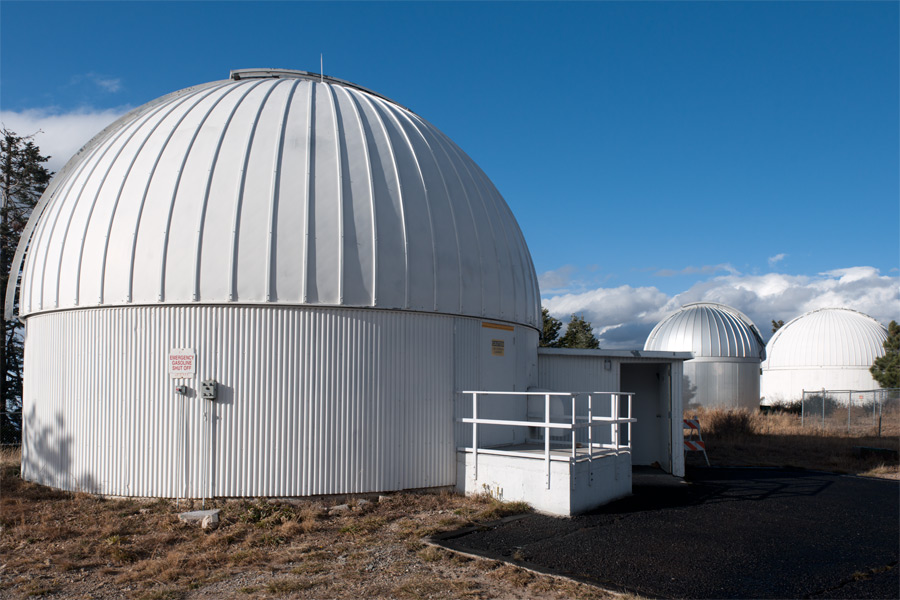
Above, the observatory dome that houses the telescope which we will use. The domes' in the background
house equipment dedicated to scanning our skies and identifying objects that are in near Earth orbits, tracking
and identifying up to 1,000 stray objects in our solar system each evening.
Further behind lies another observatory that is remotely operated by a research team in Korea.
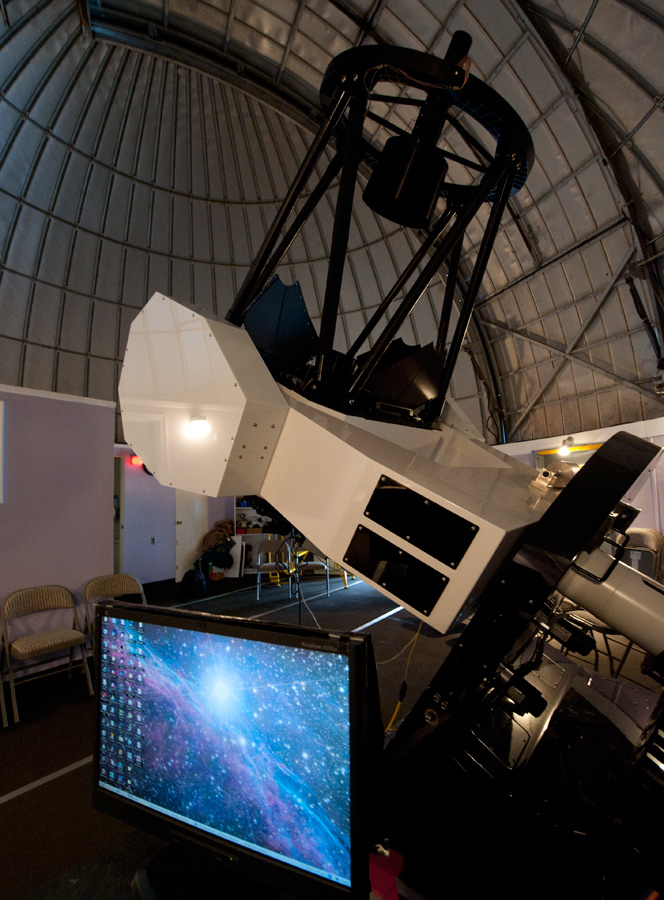
The 32 inch Ritchey-Chretien telescope that will be used for our imaging session.
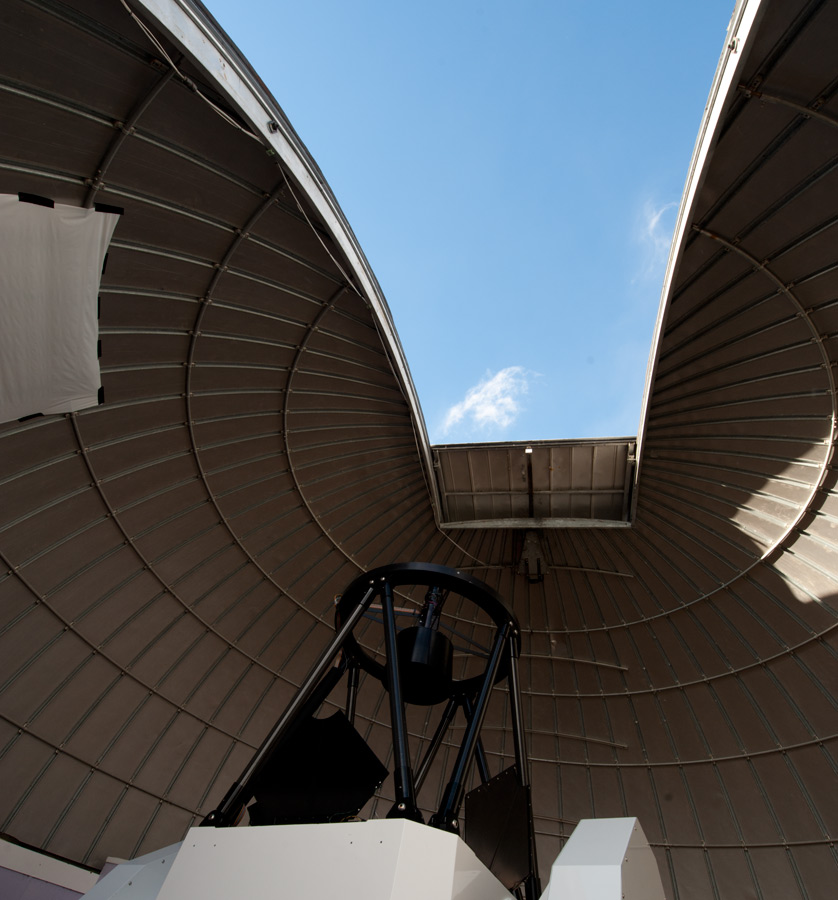
The observatory roof is opened. The dome is electronically tied to the telescope's
operation, moving as required to keep up with the telescope's aim.
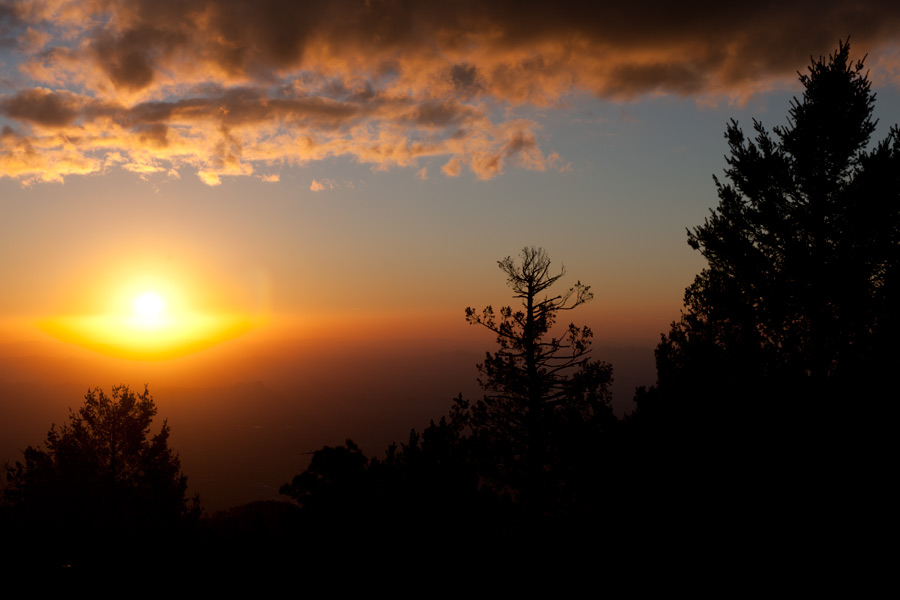
Sunset nears, and temperatures plummet into the high 20's F. Briefly we have snow flurries.
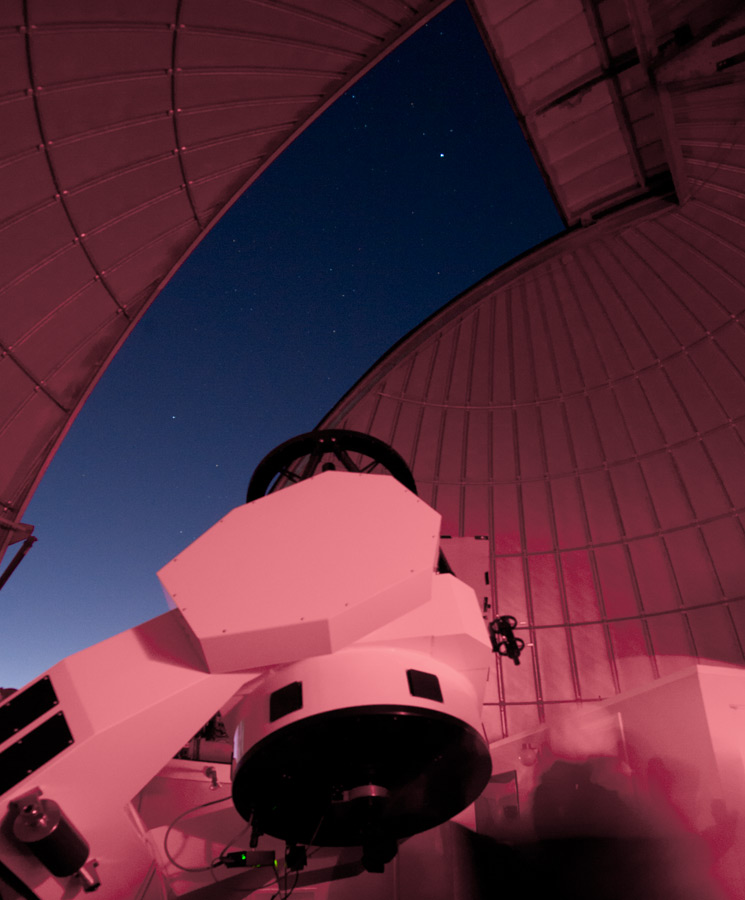
As the skies darken, the telescope is prepared for imaging. Usage of red flashlights create the ambient light.
Various fans are activated to begin cooling the telescope's mirrors to match dropping ambient temperatures.
Despite the telescope's size, the mount silently and smoothly aims the unit with incredible precision.
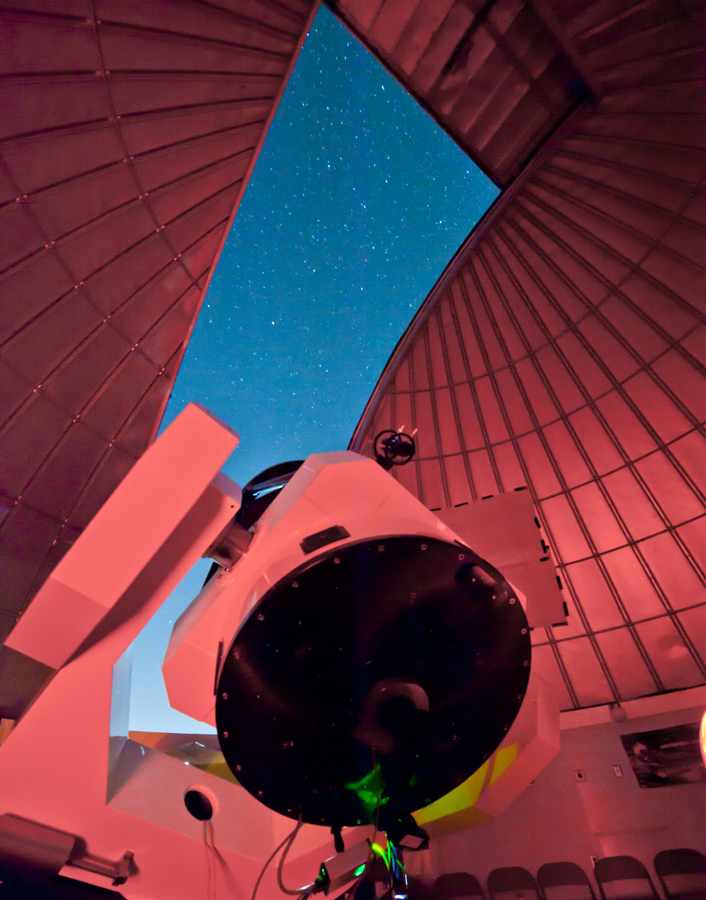
The telescope is being prepared to operate with a CCD camera that is cooled to about minus 25F.
The observatory itself gets really cold as we are at the top of Mt. Lemmon in November.
On the side there is a small heated room that allows a few astronomers to control the
telescope without being subjected to very cold temperatures.
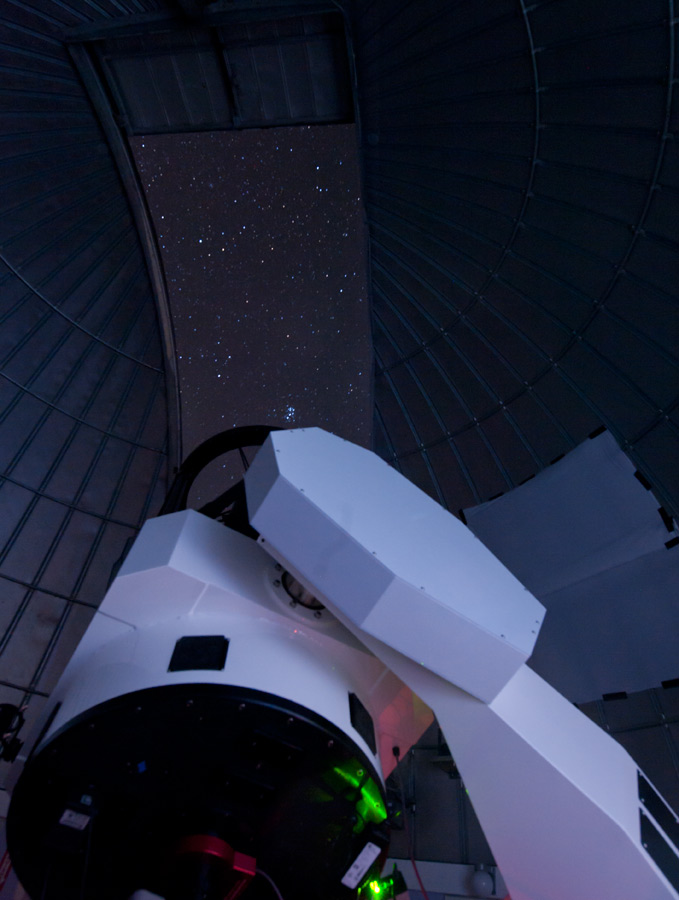
Imaging underway, one object frequently takes 4-6 hours.
The telescope's mount precisely tracks the target as the Earth rotates.

The images begin to pour in. For this session a series of 10 minute exposures were taken with a dedicated CCD camera.
The telescope performance and image capture quality are actively monitored as conditions evolved during the evening.
The top right dark box with a fuzzy grey object represents a target star that is used for extremely precise tracking.
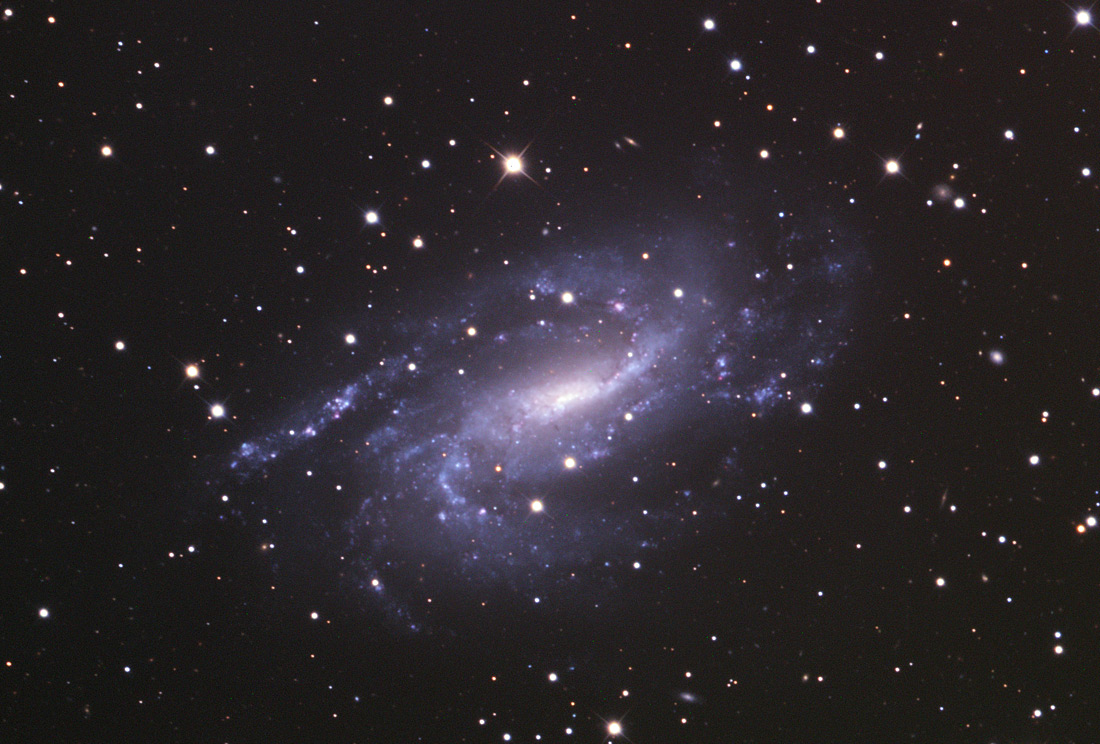
The first image I processed from 26 exposures: A spiral galaxy NGC 925. The CCD camera
recorded two hours of luminance, along with 50 minutes each of red, green and blue filtered data.
An automated filter wheel rotated in front of the CCD sensor during the session.
The images were integrated using dedicated astronomy software and processed in Photoshop. If you
search the internet for NGC 925 images taken from Earth, you won't find many (possibly any)
that exceed the quality captured above. (image capture, courtesy of Adam Block, Arizona SkyCenter)
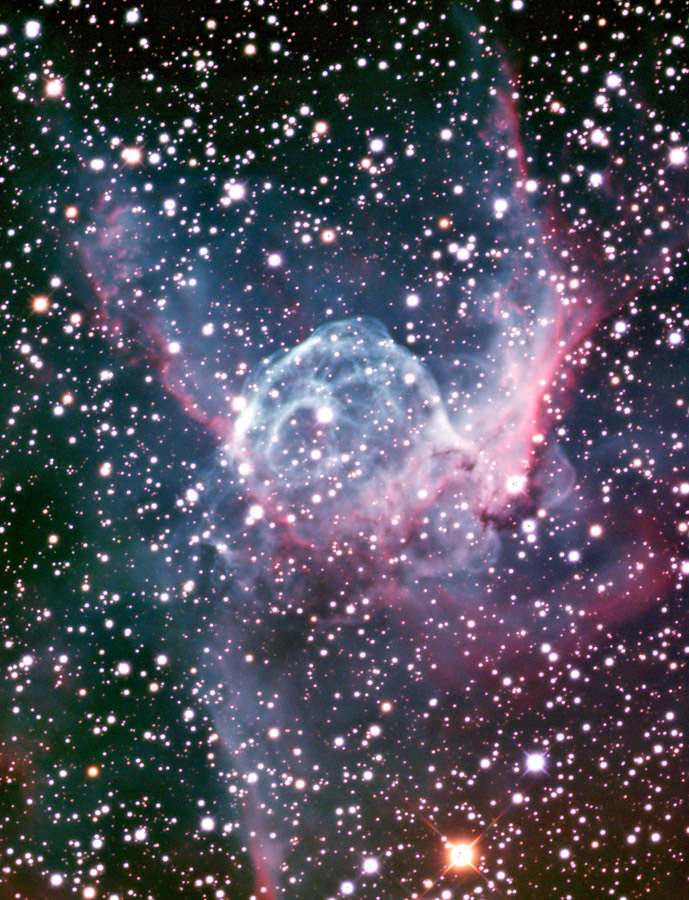
The second captured object, a nebula known as "Thor's Helmet" or NGC 2359, located 15,000 light years away.
I processed the raw camera data to develop the image above.
(image capture, courtesy of Adam Block, Arizona SkyCenter)
We worked until 5:30am, or until the sky was no longer dark. Three GB of data
was captured during an intesive learning session at Arizona's
SkyCenter Program. For an interested hobbyist, this is an outstanding program
that gives the participant access to unmatched equipment and expertise.
The images above would not have been possible without the expertise of Adam Block, who
runs the SkyCenter telescope program. For more information, visit: http://skycenter.arizona.edu/
© 2010 John Miranda